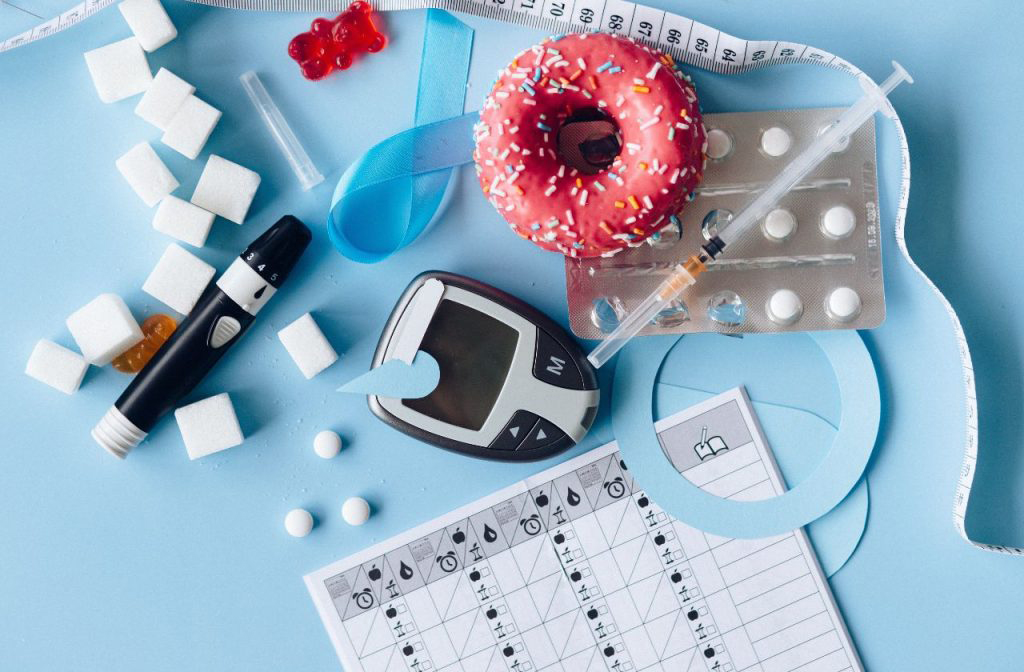Did you know that you can reverse pre-diabetes with diet and lifestyle changes?

Pre-diabetes is a common health issue affecting 16 out of every 100 Australians. It happens when blood sugar levels are higher than normal but not high enough for a Type 2 Diabetes diagnosis. The National Diabetes Services Scheme (NDSS) emphasises the widespread nature of this condition and the need for awareness.
At the core of pre-diabetes is insulin resistance, where the body’s cells become less responsive to insulin, a hormone crucial for moving sugar from the blood into cells. This results in elevated blood sugar levels. What makes pre-diabetes challenging is its lack of symptoms, making early detection difficult. Diagnosis involves checking blood sugar levels at a pathology lab.
The statistics from the NDSS highlight the urgency of addressing pre-diabetes due to its strong link to Type 2 Diabetes. Those with pre-diabetes face a significant 10 to 20 times higher risk of developing Type 2 diabetes, increasing the likelihood of heart disease. Early intervention and lifestyle changes are crucial to avoid these complications.
The positive aspect of pre-diabetes is its potential reversibility through diet and exercise. Even small lifestyle changes hold the promise of preventing Type 2 Diabetes and lowering the risk of cardiovascular issues. Modest weight loss—around 5 to 10% of body weight—can have significant benefits, illustrating the impact of small adjustments on metabolic health.
Managing pre-diabetes through diet involves incorporating nutrient-dense foods. A balanced diet includes a variety of fruits, low-fat dairy products, vegetables, legumes, and minimally processed whole grains as well as lean protein sources, like poultry, fish, tofu, and limited lean meats.
A key dietary strategy is incorporating high-fibre, low-glycemic index (GI) carbohydrates. The glycemic index (GI) is a measure that ranks carbohydrate-containing foods based on their impact on blood sugar levels. It provides insight into how quickly a particular food causes blood sugar to rise after consumption. The concept of the glycemic index is particularly relevant for individuals with pre-diabetes or those aiming to manage their weight, who need to regulate their blood sugar levels.
Foods with a high glycemic index are rapidly digested and absorbed, leading to a quick spike in blood sugar levels. Conversely, foods with a low glycemic index are digested and absorbed more slowly, resulting in a more gradual and sustained increase in blood sugar levels.
The glycemic index is typically expressed as a numerical value, with higher values indicating a faster and greater increase in blood sugar. The scale is often divided into three categories:
- Low GI (55 or less): Foods in this category are considered to have a minor impact on blood sugar levels. They are slowly digested and help provide a gradual release of energy.
- Medium GI (56-69): Foods with a medium glycemic index have a moderate impact on blood sugar levels. They are digested at a moderate pace.
- High GI (70 and above): Foods in this category are rapidly digested and cause a swift increase in blood sugar levels.
Low GI foods are metabolised slowly, providing sustained energy and avoiding sudden spikes in blood sugar levels. Coupled with the filling effect of dietary fibre, this approach aids in weight management and helps maintain stable blood sugar levels. Aiming for more low and medium-glycemic index foods into your diet includes adding whole grains, legumes, fruits, and vegetables, which are generally associated with a slower and more controlled release of glucose into the bloodstream. However, individual responses to foods can vary, and it’s advisable for individuals to work with Accredited Practising Dietitians to tailor dietary choices based on their specific health needs and goals.
Navigating lifestyle changes can be challenging, prompting the recommendation to seek professional guidance. Accredited Practising Dietitians, like myself, can offer personalised advice, considering individual preferences, constraints, and goals. Even small adjustments, when intentional, can yield significant benefits. Managing pre-diabetes is a collaborative effort between individuals and healthcare professionals. Recognising the need for support, such as at OnePointHealth where I offer personalised consultations to guide the journey.
In summary, pre-diabetes is a crucial stage in metabolic health, requiring attention and proactive management. Understanding the basics of insulin, glucose, and lifestyle factors is key. Embracing the potential for reversibility through diet, exercise, and professional guidance empowers individuals to take control of their health. Pre-diabetes is not a passive precursor to Type 2 Diabetes but a chance to reshape one’s health and strive for enduring well-being.








